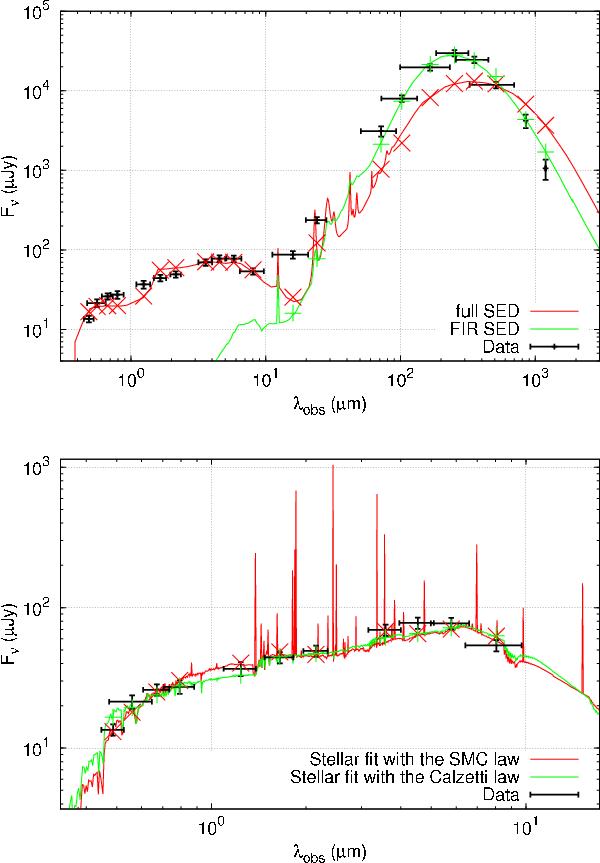Fig. 10

Top: observed and model SED for cB58. Although not a good fit, the best match to the full, global SED is found with templates from M10. We can see that the template does not match the photometry in the NUV-blue as it does not describe a population as young as is cB58’s and misses the IR peak by a factor of ~2.5. The FIR fit is obtained with a template among the brightest and warmest from CE01 that matches the IR peak very well. Bottom: SED fits to the stellar part of cB58. The red line shows the best-fit for declining SFHs, including nebular emission, and assuming the SMC extinction law. Green shows the fit neglecting nebular emission and assuming the Calzetti law (best fit among the Calzetti-based solutions). We can see that for the Calzetti law the fitted SED falls out of the 1σ uncertainty of the g-band photometry as noticed in Wuyts et al. (2012) and Siana et al. (2008). In this a case, UV slopes derived from SED fits can vary substantially depending on the extinction law used, especially around the 1300−1800 Å interval.
Current usage metrics show cumulative count of Article Views (full-text article views including HTML views, PDF and ePub downloads, according to the available data) and Abstracts Views on Vision4Press platform.
Data correspond to usage on the plateform after 2015. The current usage metrics is available 48-96 hours after online publication and is updated daily on week days.
Initial download of the metrics may take a while.




